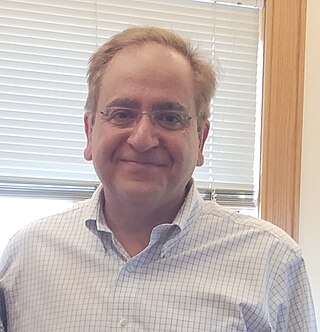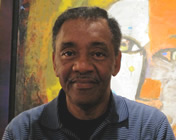
Charles Alfred Coulson was a British applied mathematician and theoretical chemist.

Boris Yakovlevich Podolsky was a Russian-American physicist of Jewish descent, noted for his work with Albert Einstein and Nathan Rosen on entangled wave functions and the EPR paradox.

Cumrun Vafa is an Iranian-American theoretical physicist and the Hollis Professor of Mathematics and Natural Philosophy at Harvard University.
Hartley Rogers Jr. was an American mathematician who worked in computability theory, and was a professor in the Mathematics Department of the Massachusetts Institute of Technology.

Harold William Kuhn was an American mathematician who studied game theory. He won the 1980 John von Neumann Theory Prize jointly with David Gale and Albert W. Tucker. A former Professor Emeritus of Mathematics at Princeton University, he is known for the Karush–Kuhn–Tucker conditions, for Kuhn's theorem, and for developing Kuhn poker. He described the Hungarian method for the assignment problem, but a paper by Carl Gustav Jacobi, published posthumously in 1890 in Latin, was later discovered that had described the Hungarian method a century before Kuhn.

Nikolay Nikolayevich Bogolyubov was a Soviet, Ukrainian and Russian mathematician and theoretical physicist known for a significant contribution to quantum field theory, classical and quantum statistical mechanics, and the theory of dynamical systems; he was the recipient of the 1992 Dirac Medal for his works and studies.

Bertram Kostant was an American mathematician who worked in representation theory, differential geometry, and mathematical physics.

Seymour Michael Blinder was a professor emeritus of chemistry and physics at the University of Michigan, Ann Arbor and was a remote working senior scientist with Wolfram Research in Champaign, Illinois.
Gordon Frank Newell was an American scientist, known for his contributions to applied mathematics, in particular traffic flow analysis and queueing theory. Newell authored over one hundred articles and wrote several books. The Gordon–Newell theorem is named after him and his colleague William J. Gordon. Their algorithms helped form the basis of most modern automatically controlled and networked traffic-light control systems.
Nicolas Rashevsky was an American theoretical physicist who was one of the pioneers of mathematical biology, and is also considered the father of mathematical biophysics and theoretical biology.

Sergei Gukov is a professor of mathematics and theoretical physics. Gukov graduated from Moscow Institute of Physics and Technology (MIPT) in Moscow, Russia before obtaining a doctorate in physics from Princeton University under the supervision of Edward Witten.

James Dillon Stasheff is an American mathematician, a professor emeritus of mathematics at the University of North Carolina at Chapel Hill. He works in algebraic topology and algebra as well as their applications to physics.
David Robert Morrison is an American mathematician and theoretical physicist. He works on string theory and algebraic geometry, especially its relations to theoretical physics.
Mark Samuel Nelkin is a theoretical physicist at the Cornell University.

Milton Dean Slaughter is an American theoretical and phenomenological physicist and affiliate professor of physics at Florida International University. Slaughter was a visiting associate professor of physics in the Center for Theoretical Physics, University of Maryland, College Park while on sabbatical from Los Alamos National Laboratory (LANL) of the University of California from 1984 to 1985. He is also chair emeritus and university research professor of physics emeritus at the University of New Orleans (UNO). Prior to joining UNO as chair of the physics department: He was a postdoctoral fellow in the LANL Theoretical Division Elementary Particles and Field Theory Group (T-8); LANL Theoretical Division Detonation Theory and Applications Group (T-14) staff physicist; LANL Theoretical Division affirmative action representative and staff physicist; LANL assistant theoretical division leader for administration and staff physicist (T-DO); LANL Nuclear and Particle Physics Group staff physicist—Medium Energy Physics Division (MP-4); and LANL Historically Black Colleges and Universities (HBCU) project manager (laboratory-wide).
Colin Pask is a British mathematical physicist and science writer.
Gerald Goldin is currently a distinguished professor at Rutgers University. He is part of three divisions at Rutgers University: Department of Learning and Teaching, Department of Mathematics, and Department of Physics.
George Stanley Rushbrooke was a 20th century British theoretical physicist.
Daniel Scherwin Koltun (1933–2014) was an American theoretical physicist, specializing in nuclear physics.










